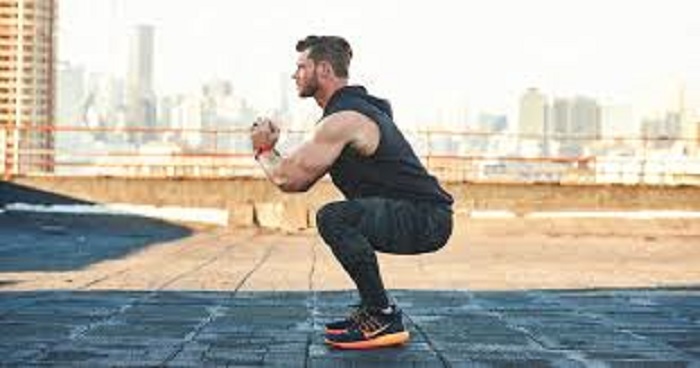So, you go to the gym, hit the weights, the treadmill, do a little cardio and you leave feeling pumped
After a few months of this, you catch yourself in the mirror and say, “Wow, my muscles have gotten bigger.” And as you gaze at your newly sculpted body a question pops into your head. How did this happen? o how does working out work?
The simple answer of course is that you’ve been “working out” and “working out” leads to muscles. But that answer doesn’t really get to the heart of the matter. In fact that answer can only lead to another question.
That question is: How Does Working Out Work? What is it that pumping iron does to help grow your muscles? The answer all of us have heard is that working out breaks down your muscles; as they grow back they come back bigger. That makes sense, and is true to an extent, but what are the specifics? What’s the science behind it? In this article I will tell you the science behind why working out works and explain to you what’s actually happening to your muscles with more than just some general statement.
The human body is a miracle
Everything starts with the understanding that your body is amazing. The human body is just an absolute miracle of nature. Perhaps most remarkably is that it has the ability to regenerate and heal itself.
To illustrate this point think about this simple example. What happens when you get a deep cut and go to the doctor? The only thing they’re going to do is give you stiches. That’s it. There is nothing they’re going to do to actually help the wound heal. You’re just given some thread to hold the skin together and your body does the rest (and really it would still heal without the thread but you’d have a nice scar). Your body regenerates that injured tissue and heals itself. The effect working out has on your muscles falls under the same concept. The results you see are your body re-healing itself. It’s regenerating new tissue.
To understand how this works we’ve got to know just a little about anatomy and what actually stimulates the muscle to work. Now I can hear you moaning but stick with me.
The muscles, kinds, composition
There are 3 major kinds of muscle in your body: Smooth (Intestinal), Cardiac (Heart), and finally the one we’re looking at; Skeletal or Striated Muscle. It’s called this because the muscles are in fact striated, and they’re the muscles attached to your skeleton. Skeletal muscles are the ones that you can see when you look at some one. It’s their biceps, their quads. They’re those six pack abs we all want and they’re the ones we’re going to concentrate on. So let’s breakdown what the muscle is actually made up of. When you see that huge triceps muscle on the un-naturally large man on the bench press next to you you’re not looking at one whole piece. This is because a muscle is actually made up of thousands and thousands of strands. To visualize imagine if you will a piece of twine. Its many tiny fibers spun together to make the string. Muscles are very similar. The smallest little strand is called the myofibril. These are the building blocks of your muscle. Inside the myofibrils are the actual filaments that make contractile action (force) capable; Actin and Myosin. Actin and Myosin are in the fibers and make up the myofibrils. Myofibrils are wrapped together by the: Sarcoplasmic reticulum (SR), T-tubules (which transfer nerve signals), and mitochondria (the energy producers). These bundles are wrapped by a fascilema. This continues with other layers until you have your muscle.
How muscles work
Muscles actually work when your brain releases signals (called the Action Potential) by electrical current through a Motor Neuron (nerve) that extends to individual muscle fibers. The signal “jumps” from the nerve fiber to the muscle fiber, travels down the T-tubules and stimulates the SR. When the SR is stimulated it releases calcium. When this calcium is released the bond between Actin and a chemical compound called Troponin breaks, and Myosin attaches to this site causing the Actin and Myosin to slide over each other. At this site ATP (Energy) is split, energy is released, and the muscle fiber contracts and produces force. Now that you understand what makes up the actual muscle we can identify how working out builds these muscles, and here’s the secret; working out is not really what actually builds muscle. It’s the recovery time between working out that builds your muscles and it’s all about Fatigue. Fatigue is the point where there is an inability to contract the muscles despite continued neural stimulation.
Why does the working out work?
The whole point of working out is to fatigue your muscles. When you allow your body to recover from working out it increases the point at which your muscles fatigue. The working out works by training the muscle fibers to work more efficiently, fire faster, fire in more unison, and create a greater synchronized tension that results in a greater output of force; i.e. you get stronger. So, as you workout you fatigue your muscles. You take them to the point where they can no longer produce force because the necessary components have been depleted. The rebuilding all comes back to the statement I made in the introduction about your body having the amazing ability to re-heal itself. There’s a lot that happens during the rest period that the muscle recovery is dependent upon. Most importantly is actual physical rest from muscle exertion and diet. In the right environment the body initiates: the return of intracellular energy supplies, circulatory based cellular by-product removal, and oxygen. This article of the same category could also interest you.




